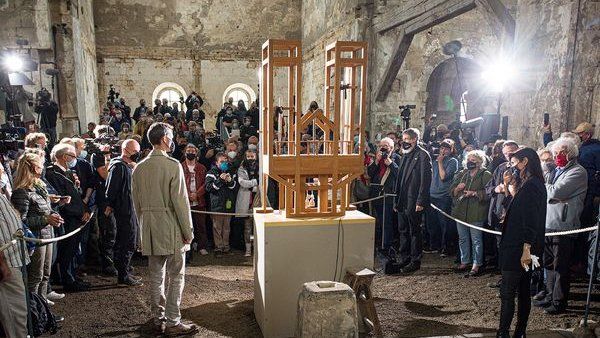ARTICLE AD BOX
 Image source, John Cage Organ Project
Image source, John Cage Organ Project
The composition plays on a specially built mechanical organ in a church in Germany
The longest - and slowest - music composition in existence had a big day on Monday - it changed chord for the first time in two years.
Crowds gathered at a church in Germany to witness the rare moment, which is part of an artistic feat by avant-garde composer, John Cage.
The experimental piece, entitled As Slow as Possible, began in 2001.
Being played on a specially-built organ, it is not set to finish playing until the year 2640.
That's 616 years away. Looking at that period of time in the other direction - the Renaissance was starting to rumble into existence in Europe.
The composition, which in full is entitled Organ²/ASLSP (As Slow as Possible), has now had 16 chord changes.
Volunteers added another pipe into the mechanical organ to create the new sound, at the Burchardi Church in the German town of Halberstadt.
While the composition officially started in 2001 - it began with 18 months of silence, and the first notes only rang out in 2003.
Some people reportedly booked tickets years in advance to experience Monday's chord change.
The score is made up of eight pages of music, designed to be played on either the piano or organ. Though the instruction in its title - for the piece to be played as slowly as possible - was clear, no exact tempo was ever specified.
The last timethe chord was changed was exactly two years ago - on 5 February 2022. The next scheduled change will be on 5 August 2026, according to the project's website.
In contrast to this current performance of epic proportions, the piece's premiere in 1987 lasted just shy of 30 minutes. But subsequent performances, including a 2009 rendition by organist Diane Luchese, lasted 14 hours and 56 minutes.
This current, much longer rendition was born out of a meeting of musicians and philosophers following Cage's death.
For practical reasons, the mechanical organ was designed, using an electronic wind machine to push air into the pipes, while sand bags press down the keys to create the drone-like sound.
American composer John Cage, who died in 1992, was at the forefront of experimental and avant-garde music in the 20th Century.
His most famous piece, 4'33", is designed to be played by any combination of instruments - but musicians are instructed not to play them.
Instead, listeners hear the sound of their surrounding environment during the four minutes and 33 seconds the work lasts.
You may also be interested in:
From 2020: Music fans gather in a church to hear a chord change in a composition meant to last 639 years

 11 months ago
114
11 months ago
114








 English (US) ·
English (US) ·